Native Plants
The native plant nursery at the Prairie and Wetland Center offers over 500 local-source native plant species. Explore these prairie grasses, wildflowers, wetland plants, trees and shrubs to learn more about our beautiful and environmentally friendly natives.
We also offer a small selection of transitional plants selected from native species for their outstanding horticultural characteristics. These transitional plants can be used to enhance native plantings in many urban landscapes.
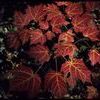
|
How You Say It:
Common Name: Red Maple
One of the first trees to color in fall, leaves may be bright yellow, flaming orange or red. Crown is narrow to broadly rounded with a straight trunk. Much stronger wood than silver maple but it still grows very fast. Often planted as an urban shade...
[ More Info ] [ Add to Shopping List ]
|
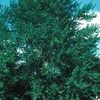
|
Common Name: Silver Maple
Easy-to-grow shade tree that grows quickly on a wide range of sites. Deep green foliage with silvery undersides turns gold in autumn. Upright oval shape with strong branching characteristics....
[ More Info ] [ Add to Shopping List ]
|
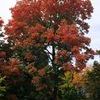
|
How You Say It:
Common Name: Sugar Maple
A large shade tree with excellent form. Famous for it prized syrup, Sugar Maples offer fabulous fall color in shades of bright yellow, orange or red. The summer foliage is medium to dark green. Naturally found in lower elevations, the Sugar Maple gro...
[ More Info ] [ Add to Shopping List ]
|
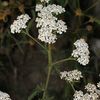
|
Common Name: Yarrow
Yarrow is an erect, herbaceous perennial plant that produces one to several stems. Hairy leaves are evenly distributed along the stems. The narrow leaves are finely divided, almost feathery, and arranged spirally on the stems. Flower clusters contai...
[ More Info ] [ Add to Shopping List ]
|
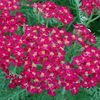
|
Common Name: Rosy Red Yarrow
Cluster-like flowers similar to the native White Yarrow make this reddish-pink cultivar a colorful addition when planted with other yarrows or in a mixture. Can be somewhat aggressive. Tolerates a wide range of soil and moisture conditions. Blooms al...
[ More Info ] [ Add to Shopping List ]
|
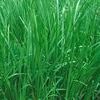
|
Common Name: Sweet Flag
Sweet flag is a deciduous, spreading, marginal aquatic perennial that features iris-like, sword-shaped leaf blades (to 3/4" wide). Mature leaves have one wavy edge and a prominent midrib. It thrives in wet, boggy soils and is commonly grown as a foli...
[ More Info ] [ Add to Shopping List ]
|
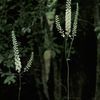
|
Common Name: Black Cohosh
An aristocratic plant with tall spires of fragrant, tiny white flowers in early summer over mounds of finely-cut, fanlike green leaves. The flowers actually lack petals; the numerous stamens create the appearance of a white flower spike. Grows well i...
[ More Info ] [ Add to Shopping List ]
|
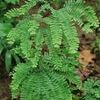
|
Common Name: Maidenhair Fern
This fern's delicate appearance disguises its tough nature! The name comes from the shiny, dark, hair-like stalks that branch to hold the fan-shaped leaves almost horizontally with a delicate strength. The fronds unfurl fairly late in the spring, u...
[ More Info ] [ Add to Shopping List ]
|
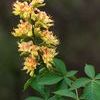
|
Common Name: Ohio Buckeye
Medium-sized tree which naturally occurs in lowlands. This buckeye prefers moist sites such as river bottoms and streambanks. It will grow on drier sites, but much slower and will not develop as attractively. Large spikes of green-yellow flowers bloo...
[ More Info ] [ Add to Shopping List ]
|
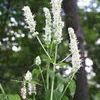
|
Common Name: Yellow Giant Hyssop
An interesting plant which is equally good in the back of the border or container. The better the drainage, the happier the plant. Creamy yellow blooms flower from June to October and are attractive to hummingbirds and butterflies, and foliage is min...
[ More Info ] [ Add to Shopping List ]
|
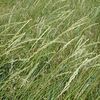
|
Common Name: Western Wheatgrass
Perennial grass with bluish colored stems and leaves. Leaf blades flat but rolled when dry, 1/8 to ¼ inch wide, 4 to 10 inches long, rather stiff, pointed at the tips, ridged and rough on upper surface; leaves rolled in the bud; ligules very short....
[ More Info ] [ Add to Shopping List ]
|
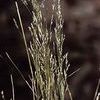
|
Common Name: Redtop
Redtop is a creeping perennial, related to the bentgrasses. It is now found over much of the northern United States, although it originally came from Europe. The stems are slender with narrow leaves, about 1/4 inch wide. The panicle is loose and pyra...
[ More Info ] [ Add to Shopping List ]
|
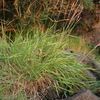
|
Common Name: Creeping Bentgrass
Creeping Bentgrass spreads by vigorous above-ground stems and forms puffy, dense patches of fine-textured grass capable of forcing out other turfgrasses. The blue-green leaves are flat and narrow, approximately 1/8 inch wide, and usually rough on upp...
[ More Info ] [ Add to Shopping List ]
|
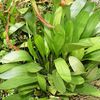
|
Common Name: Water Plantain
A flowering plant native to most of the Northern Hemisphere including Europe, northern Asia and North America. Plants grow in shallow water and consist of a fibrous root, several basal leaves and a triangular stem. Branched clusters of numerous small...
[ More Info ] [ Add to Shopping List ]
|
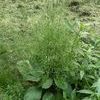
|
Common Name: Small-Flowered Water Plantain
A tall, spindly, many-branched water plant with small white (rarely pink) flowers arranged in whorls. Occurs in shallow water in freshwater marshes, sluggish streams and along the edges of ponds and lakes. The lower part of the plant is often submerg...
[ More Info ] [ Add to Shopping List ]
|
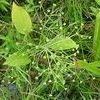
|
Common Name: Large-Flowered Water Plantain
This aquatic species can be found scattered throughout much of the Midwest. The plant consist of a rosette of smooth, oval-shaped basal leaves about one foot tall and up to seven inches long and three inches across. Plants of this genus are eaten by ...
[ More Info ] [ Add to Shopping List ]
|
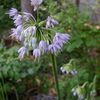
|
Common Name: Nodding Onion
This is one of the most attractive of our native alliums. Pure white to light pink flowers are suspended on two foot tall stalks in late summer. A great choice for short prairie meadows and sunny borders, Nodding Onion will thrive in any moderately r...
[ More Info ] [ Add to Shopping List ]
|
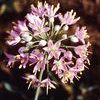
|
Common Name: Prairie Onion
This showy species is the latest blooming native onion. It is easy to identify in the field. The papery-covered bulb, pink flowers, and flat, persistent leaves are good characters. Pccurs primarily in rocky soils on limestone glades and bluff ledges....
[ More Info ] [ Add to Shopping List ]
|
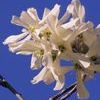
|
Common Name: Serviceberry
A fine shrub or small tree that is an excellent choice for shaded areas. Serviceberry occurs naturally in woods, along river banks, in swamps and along rocky slopes. Clusters of fragrant white flowers are among the first to bloom in spring. Flowers g...
[ More Info ] [ Add to Shopping List ]
|
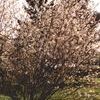
|
Common Name: Shadblow Serviceberry
Shadblow Serviceberry is a deciduous, early-flowering, large shrub or small tree which features showy, five-petaled, slightly fragrant, white flowers in drooping clusters which appear before the leaves emerge in early spring. Small, finely toothed, e...
[ More Info ] [ Add to Shopping List ]
|
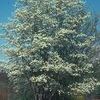
|
Common Name: Allegheny Serviceberry
Allegheny Serviceberry is a small, deciduous, usually multi-trunked understory tree or tall shrub. It is found in open woods, on sheltered slopes and along wood margins. White flowers are showy, five-petaled and slightly fragrant. They appear in droo...
[ More Info ] [ Add to Shopping List ]
|
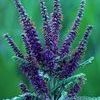
|
Common Name: Lead Plant
A small shrubby prairie plant with tight spikes of iridescent purple and orange flowers appear from May to August. Lead Plant is naturally found in dry to mesic prairies and in open, upland savannas through most of the tallgrass region. Silver-green...
[ More Info ] [ Add to Shopping List ]
|
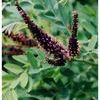
|
Common Name: Indigo Bush
Indigo Bush is a shrub with firm, woody branches and twigs that are green and hairy. The leaves have 13 to 25 leaflets each. The leaflets are one to two inches long, resinous, dotted and hairy. The flowers are terminal on the branches in erect raceme...
[ More Info ] [ Add to Shopping List ]
|
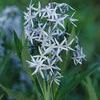
|
Common Name: Shining Blue Star
This branched plant grows up to three feet in height. Dense heads of star-shaped, sky blue flowers bloom in spring for many weeks. Butterflies love the nectar. Deep green, shiny, willowlike leaves turn bright gold to bronze in the fall making this an...
[ More Info ] [ Add to Shopping List ]
|
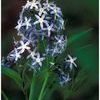
|
Common Name: Bluestar
In spring, this beefy perennial with 1-inch wide, straplike foliage, blooms with big heads of light blue flowers for several weeks. In fall, the foliage turns light yellow....
[ More Info ] [ Add to Shopping List ]
|
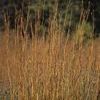
|
Common Name: Big Bluestem
Upright clumps of green to blue-green leaves turn rich orange and copper-red in fall. Reddish flower heads bloom in August. If left up, the foliage adds interest to the winter landscape and provides food and cover for wildlife....
[ More Info ] [ Add to Shopping List ]
|
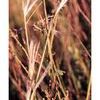
|
Common Name: Silverbeard; Splitbeard Grass
In the fall, the blue green blades turn shades of copper, bronze, and purple. The shimmering seed heads are especially attractive....
[ More Info ] [ Add to Shopping List ]
|
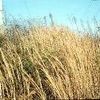
|
Common Name: Broom Sedge
An indicator species found on sterile sites or high-acid soils of old fields and pastures. It is occasionally found in prairies. The flattened stem bases are broad and shiny. There are multiple flower clusters at the terminus of each stalk. Provides...
[ More Info ] [ Add to Shopping List ]
|
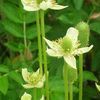
|
Common Name: Thimbleweed
In early to mid-summer, small white flowers bloom for about one month. As the flower withers, the central green cone develops into an elongated fruit that resembles a cylindrical green thimble up to 1½" long, hence the name of the plant. This thimble...
[ More Info ] [ Add to Shopping List ]
|
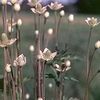
|
Common Name: Candle Anemone
White flowers have four to nine "petals" (sepals) located on an elongate flowering stalk. Fruit elongate (1 to 1 1/2 inches in length). Numerous leaves are roughly divided into three main parts. Occurs on dry soils and open slopes....
[ More Info ] [ Add to Shopping List ]
|
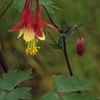
|
Common Name: Columbine
This openly branching plant bears abundant red and yellow nodding flowers in spring. The distinctive flowers offer nectar for butterflies and hummingbirds for many weeks in spring. Columbine is found naturally on shaded limestone and dolomite bluffs ...
[ More Info ] [ Add to Shopping List ]
|
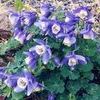
|
Common Name: Fan Columbine
This compact dwarf columbine is an excellent plant for the rock garden or a small pot. It has a neat habit and nodding blooms of white/blue, white/blush, white/rose, or white/white....
[ More Info ] [ Add to Shopping List ]
|
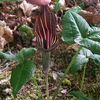
|
Common Name: Jack-in-the-Pulpit
Jack-in-the-Pulpit is a bold, spring woodland wildflower. Its flower structure consists of the spadix (Jack) which is an erect spike containing numerous, tiny, green to purple flowers and the sheath-like spathe (pulpit) which encases the lower part o...
[ More Info ] [ Add to Shopping List ]
|
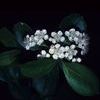
|
Common Name: Black Chokeberry
Foliage is deep green and glossy all summer then turns wine red in fall. Clusters of white flowers in spring form large black fruits in the fall which are favored by birds. This is an adaptable small, multi-branched shrub often grown as an ornamental...
[ More Info ] [ Add to Shopping List ]
|
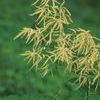
|
Common Name: Goat's Beard
A bushy plant with large plumes of frothy, creamy white flowers in June for many weeks. The seed heads that form after flowering are quite ornamental. Foliage is similar to astilbe but the growth habit is much larger and shrublike. Found occasionally...
[ More Info ] [ Add to Shopping List ]
|
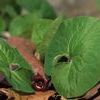
|
Common Name: Wild Ginger
A deciduous ground cover with soft green, kidney-shaped leaves. A single, reddish-brown flower, up to 1" across, blooms under the leaves in late spring. Forms large colonies in cool, moist woodland areas across the Ozarks....
[ More Info ] [ Add to Shopping List ]
|
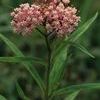
|
Common Name: Marsh Milkweed
Plants grow up to five feet in height and offer sweetly scented clusters of rose-pink flowers in summer. All kinds of pollinators find the nectar irresistable and monarch larvae feed on the foliage. Grows naturally in swamps, along streams and ponds ...
[ More Info ] [ Add to Shopping List ]
|
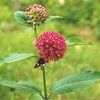
|
Common Name: Purple Milkweed
An attractive deep pink to purple flower. Blooms sparsely in low, dry areas of shady woods. The familiar milkweed pod forms on a curlicue stem, much like a pig's tail. The plant is quite striking and will grow with little care in a garden. This speci...
[ More Info ] [ Add to Shopping List ]
|
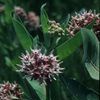
|
Common Name: Showy Milkweed
Plant is easily grown in average, dry to medium, well-drained soils in full sun. Drought tolerant and does well in poor, dry, or gravelly soils. Easily grown from seed, and may self-seed in the landscape if seed pods are not removed prior to splitt...
[ More Info ] [ Add to Shopping List ]
|
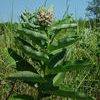
|
Common Name: Common Milkweed
This native milkweed species is the most common. The dense round clusters of dull lavender flowers have an extremely sweet fragrance and produce abundant nectar, attracting a wide variety of pollinators, among them the large and striking Monarch Butt...
[ More Info ] [ Add to Shopping List ]
|
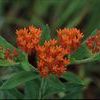
|
Common Name: Butterfly Milkweed
Lots of bright orange, flat-topped flower clusters bloom atop stout stems for many weeks in late spring through summer. This milkweed is a host plant for the monarch butterfly and a great nectar source for many other butterflies and pollinators. This...
[ More Info ] [ Add to Shopping List ]
|
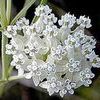
|
Common Name: Whorled Milkweed
Bring Monarch Butterflies to your garden with this pretty, sweet-scented milkweed. Tough, adaptable and deer resistant, this milkweed is easy-to-grow and tolerates clayey, sandy or rocky soil. It will thrive in average to moist garden soil as well as...
[ More Info ] [ Add to Shopping List ]
|
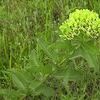
|
Common Name: Green Milkweed
Found nearly throughout North Dakota, Green Milkweed occurs in southeastern Canada and from Connecticut to Montana south to Georgia and northeastern Mexico, at elevations up to 6,000 ft.
Green Milkweed is perennial from its taproot. Stems are mos...
[ More Info ] [ Add to Shopping List ]
|
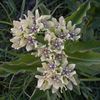
|
Common Name: Green Antelopehorn
This stunning native plant is a beauty and a great choice for any garden. The slightly spreading nature, big flower clusters and attractiveness to butterflies make the plant a garden-worthy specimen. Occurs on rocky prairies and glades, in old fields...
[ More Info ] [ Add to Shopping List ]
|
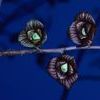
|
Common Name: Pawpaw
This multistemmed shrub or small tree is a great plant for attracting all kinds of wildlife. Tropical-looking, 6-12" long leaves are quite unusual. Edible, 2-5" yellowish fruit is relished by many birds and small mammals. Plant is larval food of Zebr...
[ More Info ] [ Add to Shopping List ]
|
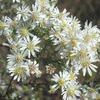
|
Common Name: White Heath Aster
Heath aster is a native wildflower that typically occurs in open rocky woods, prairies and along roads and railroads. A bushy, somewhat compact plant with many-branched stems that bear a profusion of small, daisy-like flowers (1/2" across) in late su...
[ More Info ] [ Add to Shopping List ]
|
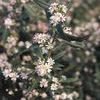
|
Common Name: Calico Aster
Brighten up the fall woodland garden with the charming flowers of this delicate aster. A myriad of white blooms with maroon and yellow centers cover the two to three foot tall stems in autumn. Flowers often change from white to shades of purple. Bloo...
[ More Info ] [ Add to Shopping List ]
|
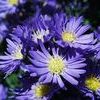
|
Common Name: New York Aster
New York Aster produces an abundance of blooms on compact plants. The plants prefer evenly moist soil but tolerate poor soil. They bloom poorly in dry soil. Performance is best in full sun to light shade....
[ More Info ] [ Add to Shopping List ]
|
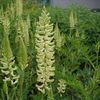
|
Common Name: Canada Milk Vetch
This unique wildflower boasts pagoda-like towers of creamy yellow flowers that rise above dark green leaves in midsummer, followed by scepters of bead-like seed pods in August....
[ More Info ] [ Add to Shopping List ]
|
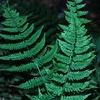
|
Common Name: Lady Fern
Bright green, lacy fronds arise gracefully from creeping rhizomes which form dense, upright clumps. Vigorous and easy to grow. Can be used as a ground cover if it is happy....
[ More Info ] [ Add to Shopping List ]
|
